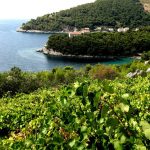As Jutarnji writes, in school, we were taught that the Earth’s interior consists of four layers: crust, mantle, outer and inner core. The border between the Earth’s crust and the mantle is called the Mohorovičić discontinuity or Moho layer because it was discovered by the Croatian scientist Andrija Mohorovicic (1857-1936), which is one of the most significant discoveries in seismology of the 20th century. Now, however, Croatian scientist Hrvoje Tkalcic is changing the existing knowledge about the interior of the Earth.
Twenty years ago, scientists made the assumption about the existence of the innermost core, and using data collected from seismic waves caused by earthquakes, Tkalcic and Thanh-Son Pham proved it. They analysed data from around 200 earthquakes of magnitude 6.0 and above in the last ten years. For example, one of the earthquakes studied by scientists occurred in Alaska. The seismic waves generated by that earthquake “rebounded” somewhere in the South Atlantic before travelling back to Alaska.
“These are observations of waves that spread two, three, four, or five times along the Earth’s diameter after large earthquakes. These waves are bounced multiple times through the Earth’s interior, like a ping pong ball bouncing in the same direction, and pass through its very centre. We observed these multiple paths of waves through the centre of the Earth for the first time in the history of seismological observations”, said Dr. Hrvoje Tkalcic, professor of seismology and mathematical geophysics and head of the Department of Geophysics at the Australian National University (ANU).
Updates in textbooks
Secondly, by measuring the time of the passage of seismic waves through the interior of the Earth’s core, we confirmed that the inner core has two parts. The inner part is the central core, and the outer part is the shell that surrounds it. Both the central inner core and the shell surrounding it are alloys of iron and nickel in a solid aggregate state. However, what differentiates them is not their chemical composition but the direction in which the waves slow down through them. In jargon, this is called anisotropy. In other words, the central core and the outer shell that surrounds it are anisotropic, each in its way, either because of the different crystal structure of iron (the way the iron atoms are arranged in the crystal lattice) or because of the orientation of the crystal”, explained Tkalcic. This Croatian scientist is one of the leading world experts in understanding the Earth’s inner core, about which he published a book published by Cambridge University Press in 2017, the first of its kind in the world.
He pointed out that studying the deep interior of the Earth’s inner core can tell more about the past and evolution of our planet.
“This inner core is like a time capsule of the Earth’s evolutionary history – a fossilized record that serves as an insight into the events of our planet’s past. This helps us understand the Earth’s history, that is, the conditions that prevailed during the crystallisation of the Earth’s inner core, in a similar way to how we study the age of trees and the climatic conditions that existed on Earth. I think that with this work, we have put a dot on the ‘i’ and confirmed the existence of the central core of the Earth. The time has come for the illustrations of the Earth’s internal structure in textbooks to change”, emphasised Hrvoje Tkalcic.
Who is Hrvoje Tkalčić?
He was born in 1970 in Bjelovar, went to high school in Vinkovci, and graduated in physics – majoring in geophysics at the Faculty of Science and Mathematics (PMF) in Zagreb. He received his doctorate on the subject interior of the Earth’s core at the University of California, Berkeley. Then he was a postdoctoral fellow at the Scripps Institute in San Diego and the Lawrence Livermore National Laboratory, the largest nuclear laboratory in the USA.
He is the recipient of the Australian Research Achievement Excellence Award, the British Price Medal, and a member of the American Geophysical Union (AGU). Also, prof. Tkalcic is an excellent populariser of science: his book, “Earthquakes: Giants That Sometimes Wake Up,” published last year by Ljevak, is very popular among readers.
Open access to the paper, as shared by the professor on Twitter.
For more, make sure to check out our dedicated News section.










